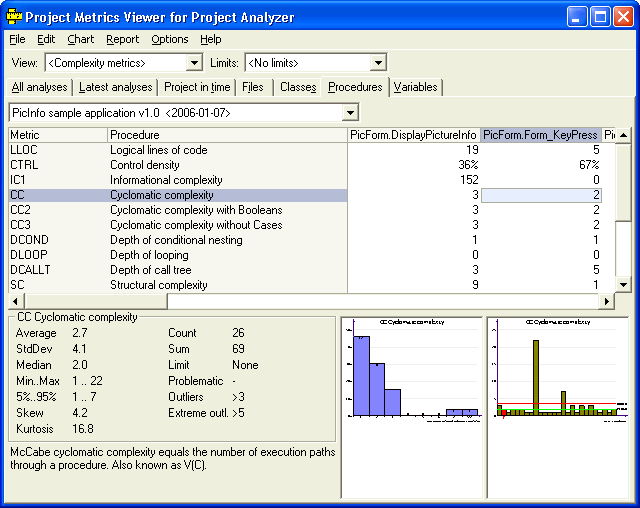The company I work for also has a large VB6 project that encountered the identifier limit. I developed a way to accurately count the number of identifiers remaining, and this has been incorporated into our build process for this project.
After trying several tools without success, I finally realized that the VB6 IDE itself knows exactly how many identifiers it has remaining. In fact, the VB6 IDE throws an "out of memory" error when you add one variable past its limit.
Taking advantage of this fact, I wrote a VB6 Add-In project that first compiles the currently loaded project in the IDE, then adds uniquely named variables to the project until it throws an error. When an error is raised, it records the number of identifiers added before the error as the number of identifiers remaining.
This number is stored in file in a location known to our automated build process, which then reads this number and reports it to the development team. When it gets below a value we feel comfortable with, we schedule some refactoring time and move more code out of this project into DLL projects. We have been using this in production for several years now, and has proven to be a reliable process.
To directly answer the question, using an Add-In is the only way I know to accurately measure the number of remaining identifiers. While I cannot share the Add-In code our project is using, I can say there is not much code involved, and it did not take long to develop.
Microsoft has a decent guide for how to create an Add-In, which can get you started:
https://support.microsoft.com/en-us/kb/189468
Here are some important details specific to counting identifiers:
- The VB6 IDE will not consistently throw an error when out of identifiers until the current loaded project has been compiled. Our Add-In programmatically does this before adding identifiers to guarantee an accurate count. If the project cannot be compiled, then an accurate count cannot be obtained.
- There are 32,500 identifiers available to a new, empty VB6 project.
- Only unique identifier names count. Two local variables with the same name in two different routines only count as one identifier.


